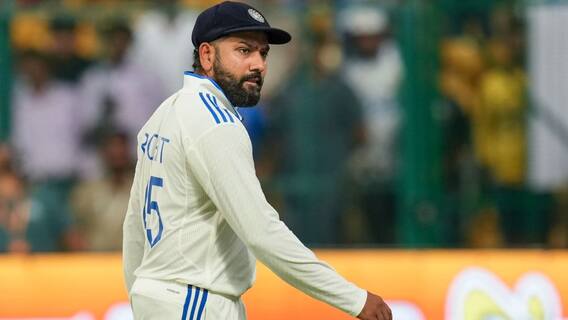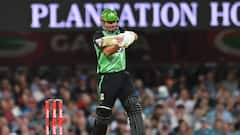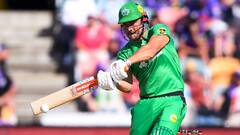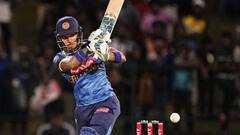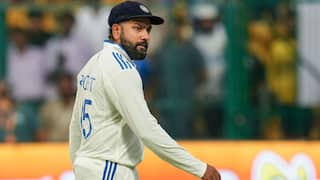Explorer
Advertisement
An Idea To Reality: The Fascinating Story Of Pink-Ball Test
Since making its foray 'Down Under' in the Australia vs New Zealand Test at the Adelaide Oval, Pink Ball Tests have become a regular feature in international cricket with 11 Tests featuring 8 nations played across the cricketing footprints.

With the advent of fast paced, exciting and more result oriented formats like one day international cricket and T20 cricket, Test cricket witnessed a sharp decline in its popularity in the 2000s . The declining viewership and the considerable drop in the spectators of the longest format of the game was a major cause of concern among the purist across the globe who loved the game in its traditional format.
The International Cricket Council did not sleep over the matter and was proactive in coming out decisive steps to make Test cricket come alive again and revive its lost glory and popularity.
There were also voices raised over the Test format becoming a bit more batting friendly and the bowlers not having level playing advantage, which was the case earlier in the era of uncovered pitches. A study into the viewership of the game further established that the fans enjoyed watching Test matches in the evening, coming back home from work.
With all these factors taken into consideration, a major case for having Test matches with a major part of it being played under lights came to the fore. What followed was how to make the Day-Night Test a reality by making requisite changes to the existing playing conditions or tinkering with the equipment.
It was no hidden secret that the age old red ball used in Test cricket was difficult to spot under lights, especially during the twilight zone and hence there was a lot of research done to change the colour of the ball to orange, pink and yellow. Some researchers even proposed Test matches to be played with white ball, which could last 80 overs with players playing with coloured kits.
With a lot of resistance coming earlier on from the traditionalists, the new Day-Night format was first adopted in women’s cricket with the first pink ball match played between England and Australia in 2009. Soon after, in January 2010, a first-class match between Guyana and Trinidad & Tobago in Antigua began in the afternoon and was played with a pink ball.
Before finally giving a green signal to playing with the pink ball in Test cricket, there were some trials carried out with the concept in England, Pakistan, Australia and South Africa’s domestic cricket. The Quaid-e-Azam Trophy final in 2011-12 was played with pink ball and an entire round of Sheffield Shield matches in Australia were played with a pink Kookaburra ball.
Finally, the pioneering feat of playing with Pink Ball in Day-Night format at the international level happened when Australia played New Zealand in a Test match at the Adelaide Oval in 2015. The game ended up as a thrilling contest between bat and ball, with the 'Kangaroos' edging the Kiwis. The pink ball gave the bowlers that bit of extra swing under lights and tested the batsman for their technique against the moving ball. Moreover Cricket Australia hailed the match played with the new format as a success, drawing more crowds to the stadium.
Since making its foray 'Down Under' at the Adelaide Oval, Pink Ball Tests have become a regular feature in international cricket with 11 Tests featuring 8 nations played across the cricketing footprints. From in Australia, to Dubai to the West Indies, teams have taken to the challenge of playing Test cricket with Pink Ball. It is notable that each of the 11 D/N Night Tests have ended in a definitive results and drawn large crowds
While 8 nations already having already played Pink Ball Test cricket, India was one of the few nations which initially showcased reluctance to play the purist form in the new format. The concern was genuine as they were apprehensive about how the SG pink ball might behave.The lack of reverse-swing and the visibility of the SG pink ball had been a major talking point in the domestic games played at major tournaments like the Duleep Trophy.
The BCCI had a dramatic turnaround in their stance on pink-ball Tests after Ganguly was elected president in 2019 and made it one of his top agendas as part of his vision to take India cricket forward.
Eventually, the BCCI went ahead with the idea of scheduling a pink-ball Test between India and Bangladesh which very much became a reality when the sub-continent rivals locks horns at the Eden Gardens in Kolkata to play out a Day-Night Test slated to be played from Nov 22 to Nov 26.
Follow Sports News on ABP Live for more latest stories and trending topics. Watch breaking news and top headlines online on ABP News LIVE TV
View More
Advertisement
Trending News
Advertisement
Advertisement
Top Headlines
Cities
Cricket
World
India
Advertisement


Nayanima Basu
Opinion



